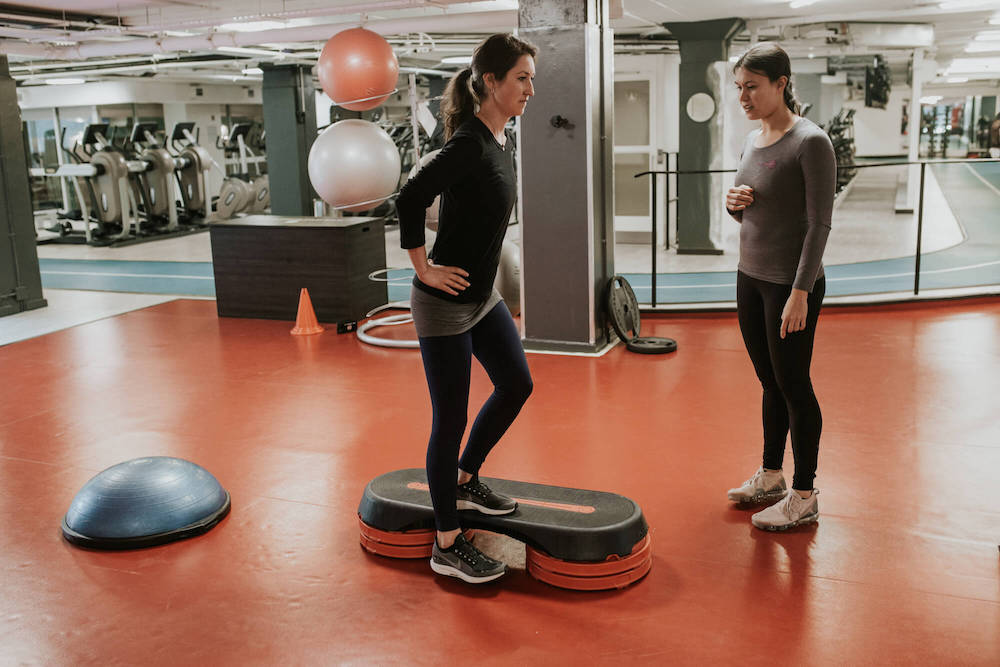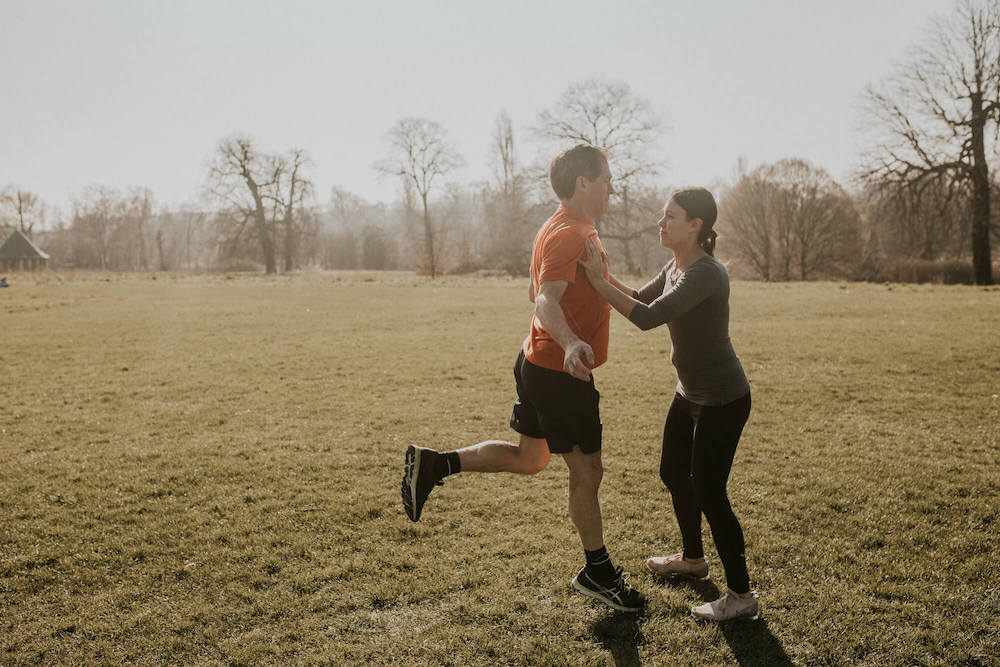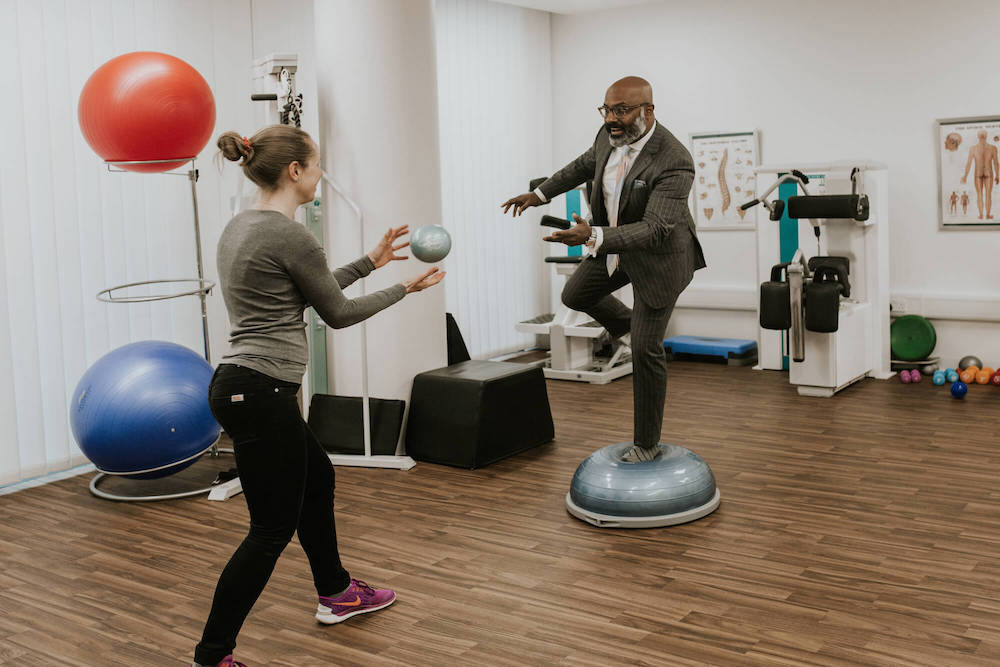When you have poor balance you’re at greater risk of injury no matter how active or inactive you are. Physiotherapy can help you strengthen the systems that contribute to better balance.
Balance is defined in biomechanics as the ability to maintain an upright position within your base of support with minimal postural sway. Balance is a key component of every movement in which we make, be it a large movement like taking a step forward, or something as small as breathing while standing up.
Throughout these movements, muscles and systems throughout the body work in unison to ensure your balance. There are 3 main elements which contribute to our awareness of balance: our proprioception, our inner ear and our sight.
The somatosensory system is a highly complex system of organs and receptors within our soft tissues. It’s often described as your “sense of touch”, even though it includes thermoreceptors (heat), proprioceptive organs (body awareness), nociceptive sensors (pain), mechanoreceptors (pressure) and chemoreceptors (taste/smell).
Proprioception is the most relevant aspect of this system when it comes to physiotherapy. Proprioception is the awareness our body is in space. There are minuscule sensors within tendons, muscles and other structures which feed back to our brain regarding the stretch and mechanical stresses on each individual joint and muscle group simultaneously. This information paints a mental picture of our limb position, as well as the velocity at which the limbs are moving. Feedback like this allows us to stand on one leg, close our eyes and touch the tip of our noses, and do complex movements such as catching a ball.
Following surgery or an injury to tendons, ligaments or other joint structures, your proprioception can be significantly affected. Our brains are used to getting a particular sensory signal from the surrounding tissues of a joint when it’s in a certain position. If the tissues which provide that feedback are lax or ruptured through injury, they are no longer stressed at a particular point of limb movement, so no signal is sent to the brain. With this reduced awareness of where our limb is in space, we are less likely to correct unstable postures or be able to climb steps or navigate uneven terrain.
Once these tissues have healed, it’s important to re-expose the brain to these modified sensations to restore proprioceptive awareness. Physiotherapy does this through exercises that challenge the body with less stable postures so that muscle groups have to work harder to remain balanced (i.e. single-leg standing). These exercises can also be combined with equipment like wobble boards/cushions. Progressions of these exercises often consist of limiting the other senses that contribute to your balance, such as sight and vestibular (inner ear) components by altering head position and use of blind folds. In getting you to be consciously aware of your limb position, a significant improvement in re-training the subconscious proprioceptive skill has been shown with 3-4 weeks of regular exercise.


Our ”vestibular system” consists of the organs within our inner ear which provide feedback to our brain regarding head position, directional movements and acceleration. Within the ear, we have several canals filled with fluid and tiny hairs. When you move your head, the fluid in this ear moves, like when you tilt a bottle of water. This stimulates and displaces the hairs which then send messages to the brain to provide awareness of the movement.
During rehab, you can “turn off” this system by tilting the head backwards. By keeping the head in this position, the fluid in the ear canals remains static, leaving the brain reliant on the other systems: sight and proprioception. This can be useful when you’re trying to improve your proprioceptive system following an injury.
There are some issues with the inner ear that can be corrected with physiotherapy, the most common being benign paroxysmal positional vertigo (BPPV). This is an inner-ear disorder which often provides a spinning sensation (vertigo) when the head changes position. Turning or tilting the head causes an overly exaggerated response from the inner-ear canals due to dislodged calcium crystals. These calcium deposits occur naturally in the ear, but usually sit in a small pocket next to the fluid channels. If they migrate into the channels, the fluid levels change (just like making the fluid level of a glass of water rise by putting an ice cube in). This means small movements of the head stimulate hairs in the ear which are usually only stimulated with exaggerated tilting movements, resulting in this sensory overload by movement known as vertigo.
Some physiotherapists are trained in manoeuvres which aim to return these calcium crystals to their intended position, ultimately reducing the heightened response. It consists of a specific order of lying, sitting and rolling in order to move the crystals around the inner-ear canals back into their “pocket”.

Sight plays the largest role in giving us awareness of our orientation. Using the natural vertical and horizontal lines of our surroundings, we can establish whether we are upright or not. There are some people who can become unbalanced due to certain floor patterns that cause illusions or visual distortions.
For those who are visually impaired it can become increasingly difficult to maintain balance without this additional sensory feedback. Injury, stroke and ageing (i.e. the formation of cataracts) have the largest effects on visual feedback with regards to balance.
Although physiotherapy doesn’t have a big influence of degenerative aspects of vision, your sight is something we consider during our assessment of balance. If you have had an injury or a stroke that’s affected your vision, you may benefit from physiotherapy to increase the effectiveness of the other two systems – proprioception and vestibular. Following a brain injury, there is often only a temporary loss in skills and abilities due to the plasticity of the brain. Different parts of the unaffected side of the brain have been shown to adopt the roles and responsibilities of the newly injured parts if they have enough exposure to the actions through exercise.
If you’ve recently been injured or have had a surgical procedure, you may benefit from rehabilitation of your balance. To discuss this further, please don’t hesitate to contact us.